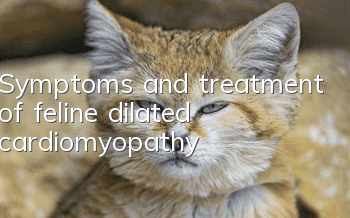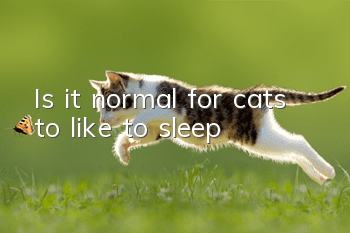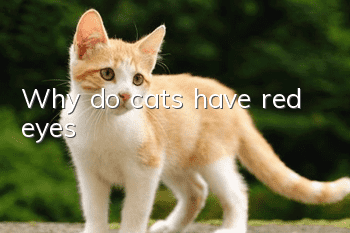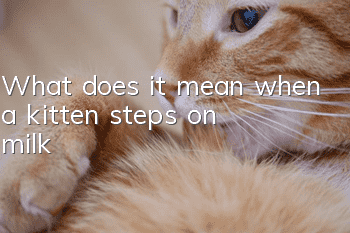Symptoms and treatment of feline dilated cardiomyopathy

What problems can cause dilated cardiomyopathy in cats
Feline dilated cardiomyopathy is a harmful cardiovascular system disease that has a great impact on cats’ bodies. The disease usually shows a chronic development trend, so if it is controlled in time, it will still have a long life. High cure rate.
Feline dilated cardiomyopathy (DCM) can be attributed to primary (congenital) or secondary taurine deficiency. DCM is characterized by enlargement of the heart's atria and ventricles, as well as poor systolic function when valves, vessels are deficient, or congenital heart disease occurs. Congenital DCM mainly occurs in young to middle-aged cats of various breeds and genders.
Cause: DCM has a certain hereditary nature. Although the disease is rare now, it still occurs. The lack of taurine in the diet also affects the disease. The left ventricle cannot contract normally, and blood output is significantly reduced, resulting in increased ventricular volume and myocardial wall tension during end-systole and end-diastole. The sympathetic nervous system and the renin-angiotensin-aldosterone system are activated, which further increases cardiac preload and afterload.
What are the symptoms of feline dilated cardiomyopathy
Feline dilated cardiomyopathy may occur both congenitally and acquired. Cats suffering from this disease have poor cardiac systolic function, so they often have difficulty breathing. Cats suffering from this disease should not do too strenuous exercise.
Symptoms of the disease are less obvious and generally include anorexia, weakness, decreased activity, vomiting, and dyspnea, the latter usually caused by pleural effusion. Pain, partial paralysis, paralysis, and coldness of the limbs in the hind limbs (rarely the forelimbs) are characteristics of arterial embolism. Auscultation revealed a galloping heart murmur with left or right peak systole. Heart sounds may be absent due to the presence of pleural or pericardial effusion.
Through X-ray examination, it can be found that cats have severe heart dilation throughout the whole body, and the lateral image of the heart often becomes very round in appearance. The left atrium was significantly enlarged. Pulmonary congestion and edema are often seen and may be difficult to see due to the presence of pleural fluid. The peripheral sinuses may be enlarged, and there is also evidence of hepatomegaly.
How to treat dilated cardiomyopathy in cats
Feline dilated cardiomyopathy not only makes it difficult for cats to breathe, but also has a great impact on their movements. The disease often causes paralysis of the cat’s hind limbs, and in severe cases may even lead to paralysis, so owners must Treat your cat promptly before the condition worsens.
Treatment of this disease begins with thoracentesis and diuretics to control symptoms of congestive heart failure. If the cat is in cardiogenic shock, an injection of dopamine or dobutamine may be given to provide support by affecting muscle contraction, thereby aiding cardiac output. During the injection period, the cat's condition should be observed at all times.
Digoxin canTo improve myocardial tone in some cats, but should be used with caution because toxic symptoms can occur even at low doses. ACE inhibitors, especially enalapril, may be beneficial in cats with DCM. When DCM is related to taurine deficiency, supplementing taurine (250 to 500 mg/cat, orally, 12 hours apart) can lead to rapid clinical improvement within two weeks.
Cardiac arrhythmias must be treated. Ventricular arrhythmias are best treated with digoxin or diltiazem, and lidocaine is used to treat ventricular arrhythmias. Because beta-adrenergic blocking drugs have negative inotropic effects, their use is best avoided in animals with congestive heart failure. Aspirin (75 mg/3 days) has been suggested to inhibit vascular embolism, but its efficacy has been questioned. Cats that do not respond to taurine have a poor prognosis. Most cats with congenital DCM live only 1 to 2 months, although some cats occasionally live 6 months or longer.
- Are British Shorthair cats smart?
- What happens before a cat gives birth? How does a cat behave before giving birth?
- How to judge whether a cat is beautiful or ugly?
- Why does the cat suddenly become inactive and always sleep?
- What to do if a big cat takes a kitten in its mouth
- Is the incidence rate of blue cats with folded ears high?
- Do I need to leave a light on for cats at night?
- Can a cat’s anal prolapse heal on its own?
- Should the pastoral cat fight the cat triplet?
- Cat's nostrils are black and caked every day



